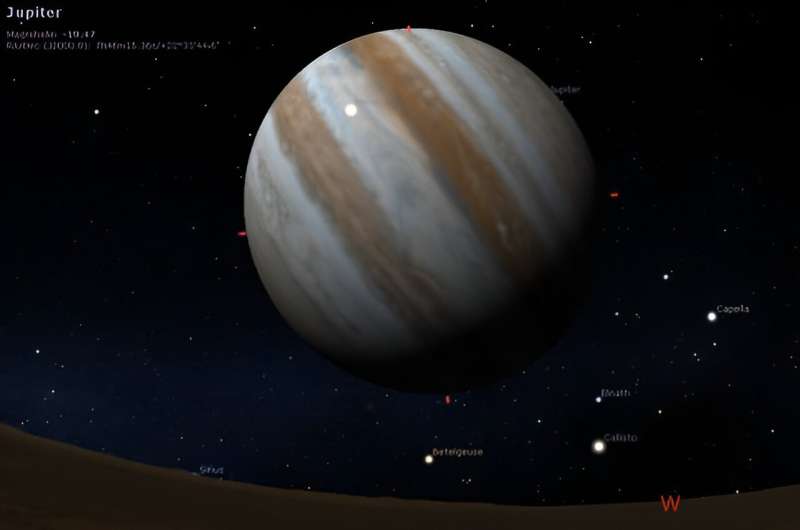New photos show Jupiter’s tiny moon Amalthea

It’s tiny, but it’s there. By now, we’re all used to seeing amazing photos of Jupiter courtesy of NASA’s Juno mission on a routine basis. Many of these are processed by volunteer “citizen scientists,” and they show the swirling cloud-tops of Jove courtesy of the spacecraft’s JunoCam in stunning detail.
Recently, JunoCam captured something special. Look closely at the side-by-side images of Jupiter from March 7, 2024, and you’ll see a tiny speck transiting the Great Red Spot in the left lead image, that isn’t in the right. That’s the tiny inner moon Amalthea, just 84 kilometers across. The image was captured during the 59th perijove (close flyby) of the “King of the Planets,” at a range of 265,000 kilometers distant (about two-thirds of the Earth–moon distance).
Amalthea: An origin story
The elusive moon was discovered by prolific astronomer and observer E.E. Barnard on the night of September 9, 1892. Barnard used the 91-centimeter diameter refractor telescope at the Lick observatory to spot the +14th magnitude moon, which never strays far from Jupiter (less than the apparent diameter of the planet) on its 12 hour orbit.
Amalthea holds the distinction of being the last moon discovered via direct visual observation, and the first moon of Jupiter discovered since Galileo first spotted the four major Galilean moons in 1610. Today, Jupiter has 95 known moons, mostly captured asteroids. These were mainly discovered photographically and during spacecraft flybys.
Like other small moonlets, Amalthea isn’t big enough to pull itself into a true sphere. Instead, like the Martian moons Phobos and Deimos, Amalthea is a potato-shaped, captured asteroid.

Amalthea: None more red
The moon is also the reddest object in the solar system, and no doubt undergoes some serious tidal flexing thanks to the enormous gravitational field of nearby Jove. Amalthea is located 180,000 kilometers from Jove, just a little over 100,000 kilometers outside of Jupiter’s Roche limit radius. Any closer to Jove would tear Amalthea apart. The very innermost moon Metis just skims this limit.
Voyagers 1 and 2 gave us the first blurry views of the moon. NASA’s only other Jupiter orbiter Galileo has provided us with the best images of Amalthea to date, with a flyby 374,000 kilometers distant on November 26, 1999. Those images reveal a misshapen world, not unlike Mars’ moon Deimos. From the surface of Amalthea, Jupiter would provide an amazing sight, spanning nearly half the sky at 42 degrees across.
Juno and the present status of the mission
Juno launched from the Cape on August 5th, 2011, and arrived at Jupiter on July 5th, 2016. The mission probes the interior of Jupiter and its magnetic and radiation environment. Juno will answer key questions, including whether the planet has a solid core.
Juno is the first solar-powered (as opposed to nuclear/plutonium-fueled) mission to the outer planets, meaning its nominal wide-ranging orbit was meant to avoid radiation damage to the solar panels. Engineers only allowed the spacecraft to venture in past the inner moons of Jupiter during the extended and final phase of the mission. Juno will operate until at least September 2025.
Two more missions are headed to Jupiter; ESA’s JUICE (Jupiter Icy moons Explorer) launched on April 14th 2023, and NASA’s Europa Clipper, set to launch in October 2024.





